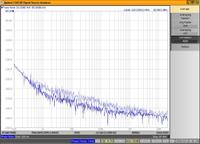N1UL
Member level 2

ulrich rohde bft66
The dc current of the transistor has little to do with the quartz dissipation. The best is to run the transistor at 15% of Icmax for best phase noise (flicker noise). The trick is to run the crystal at about 50uW , and use the crystal as both resonator and filter .
By the way
Low Phase Noise Oscillators: Theory, Design, and Laboratory
Instructor: Jeremy K.A. Everard, BAE Systems/Royal Academy of Engineering Research, Professor, Department of Electronics, University of York, UK.
Everad has published many useful low noise papers, I am not sure what products came out of it
The dc current of the transistor has little to do with the quartz dissipation. The best is to run the transistor at 15% of Icmax for best phase noise (flicker noise). The trick is to run the crystal at about 50uW , and use the crystal as both resonator and filter .
By the way
Low Phase Noise Oscillators: Theory, Design, and Laboratory
Instructor: Jeremy K.A. Everard, BAE Systems/Royal Academy of Engineering Research, Professor, Department of Electronics, University of York, UK.
Everad has published many useful low noise papers, I am not sure what products came out of it










